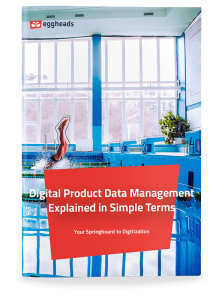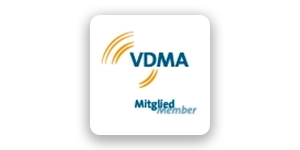Digitalization
Data Governance in E-Commerce: Why PIM is the Key to More Well-Informed Decisions

Content
Competitiveness as the Key Motivator for Using PIM in Data Governance
The global market for data governance is estimated to increase to 7.42 billion US dollar by 2026 and will reach an annual growth rate of 22.7 percent (source: dataversity.net). In the digital e-commerce landscape, where more and more companies are competing for relevance and competitiveness, the effective implementation of data governance plays a decisive role. To this end, Product Information Management (PIM) is the key that enables customers to make more well-informed decisions and handle the ever-evolving challenges in compliance and data protection.
In this article, we shed light on the important role PIM plays in data governance and demonstrate how you can use it to optimize your processes. The following are the three central aspects we’ll being looking at:
- the role of PIM in data governance,
- applying PIM to data governance, and
- best practices.
Keep on reading to gain valuable insights and practice-oriented examples that will help you strengthen the data governance of your company and use PIM in an effective manner.
The Role of PIM in Data Governance
Product Information Management has advanced to be an indispensable tool in today’s data governance. In a world in which data has become one of the most valuable resources, PIM enables companies to centralize, edit, and distribute their product information centrally.
- Centralized Data Management: A PIM system offers a central platform where all product information can be stored and processed. This reduces risks, data inconsistencies, and redundancy while grounding a uniform data source to which all corporate departments have controlled access.
- Improved Data Quality: PIM systems come with built-in validation and data cleansing functions which you can mobilize to secure the accuracy and completeness of data. The result is high-quality data on the basis of which well-informed decisions can be made.
- Efficient Distribution: With PIM, you can distribute product information effortlessly into various target channels, be it your website, catalogs, or an e-commerce platform. This makes for a consistent brand presentation and improves customer satisfaction.

Source: acquisa/PIM.
Roles and Responsibilities of the People Involved
When implementing and managing a PIM system, you have to clearly distinguish between the following roles and corresponding responsibilities:
- PIM Administrators: They’re in control of the implementation, configuration, and maintenance of the system. They make sure that the PIM system is compatible with other IT systems and runs smoothly.
- Data Controllers: They monitor the data quality, carry out data cleansings, and are responsible for the validation of new data.
- End Users: This includes all those people in your company which will use the PIM system for daily use cases, update product information, and search or distribute relevant data.
- Stakeholders: Lastly, this group consists of the management in marketing, sales, and other corporate departments who require data saved in the PIM.
Objectives and General Conditions
During the implementation of the PIM in data governance, well-defined objectives and framework conditions are crucial.
Goal: One major objective is to improve the data quality and integrity, increase the efficiency of business processes, and establish a consistent customer experience across all target channels.
- Framework Conditions: This entails the definition of standards for editing data, the setup of processes for data imports and updates, as well as assigning responsibilities.
- To successfully realize the data governance in your company, you’ll need to have a good picture of the significance PIM plays therein and actively strive towards making sure it’s firmly embedded in your business processes. With clearly defined roles, responsibilities, and framework conditions, you can make sure that your PIM system operate with the full efficiency it can provide to your company.
Applying PIM to Data Governance
A PIM software offers a central platform for the management and use of product data. It has significant impact of the data governance in the company. In the following, you learn what functions and benefits a PIM has to offer and how to integrate it so that you can use it to realize best practices in data governance.
Functions and Benefits
A PIM system takes over various functions in the context of data governance and has to offer numerous advantages. This includes among others:
- Master Data Management: A PIM enables the central management of product information and reduces data inconsistencies by establishing a so-called single source of truth.
- Integration of Data Sources: A PIM helps you in unifying scattered aggregates of data by bringing together the different corporate departments and their systems.
- Access Rights and Data Usage: This system makes it possible to define the access rights and control the management of user roles, compliance to governance guidelines, and data protection directives.
- Data Catalog: PIM offers a central data catalog that allows you to efficiently search product data, filter it, and then analyze it.
- Data-driven Decisions: By providing centralized management and use of data, PIM supports data-driven decisions and processes in companies.
Integration of PIM
The successful integration of a PIM system is crucial for profiting from the benefits that come with data governance. To this end, you should consider the following steps:
- Analyze Existing Data Sources: Identify all available data sources and systems that are relevant and ought to be integrated into the PIM.
- Define Guidelines and Processes: Establish clear guidelines and processes concerning data management and data storage; keep in mind that they must be suitable for the PIM system.
- Technical Integration: Set up the connection of the data sources to the PIM system and test, on the one hand, the data transfer and, on the other hand, that the data from all sources can be unified in the PIM system.
- Implementation of Roles and Activities: Define the roles and responsibilities of all parties involved in the use of the PIM system and provide software trainings to users.
Best Practices
Here are some best practices when it comes to the application of PIM to data governance that can help you exhaust the full potential of this technology and improve the quality of your data usage:
- Central Management: Use the PIM system as the central management interface for product information to avoid data redundancy and duplicates.
- Synchronization: Make sure that the data exchanged between the PIM system and the integrated data sources are synchronized at regular intervals to keep all data records consistent across the board.
- Documentation: Write up a documentation of the underlying processes and guidelines for data governance; check and improve it at regular intervals.
- Training and Communication: Create transparency in your company with targeted software training for PIM system users and clearly communicate just how significant data governance regulations is.
PIM as the Centerpiece of Your Data Governance Strategy
The implementation and maintenance of an effective data governance strategy is essential in the e-commerce field. After all, this is what enables well-founded business decisions. A high-performance PIM solution supports your company in guaranteeing data quality and consistency while also enabling collaboration between the different corporate departments.
The comprehensive implementation of PIM requires careful planning, an efficient project coordination, and close collaboration between people from different fields. The challenges that come with this, however, shouldn’t keep you from establishing PIM as a central element of your data governance strategy since it can generate enormous benefits for your company.
From Our Blog
You may also be interested in the following articles








